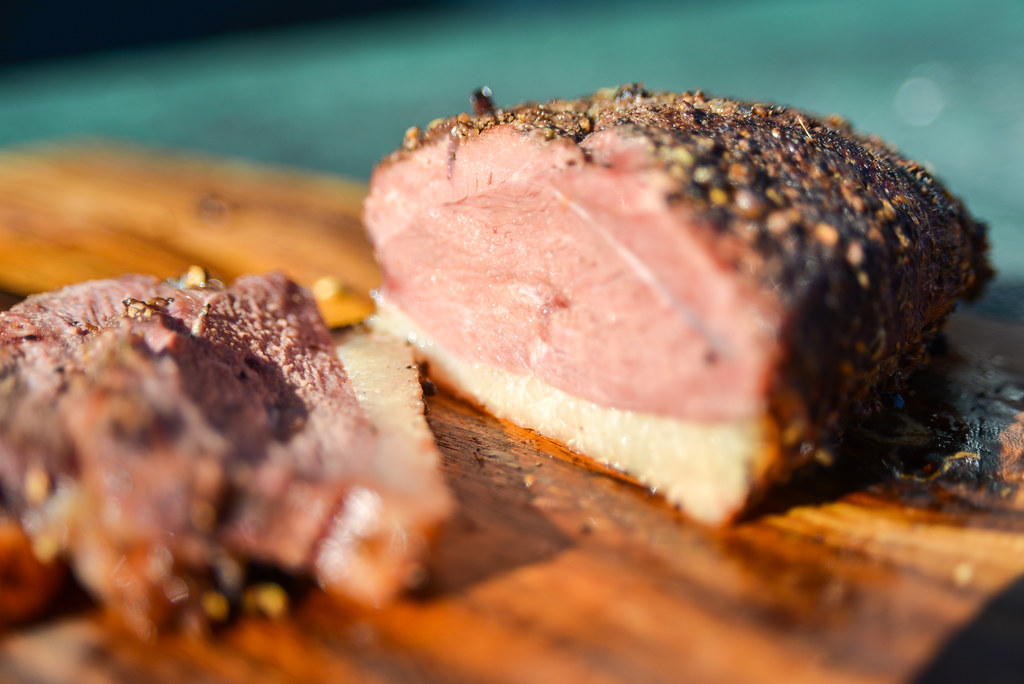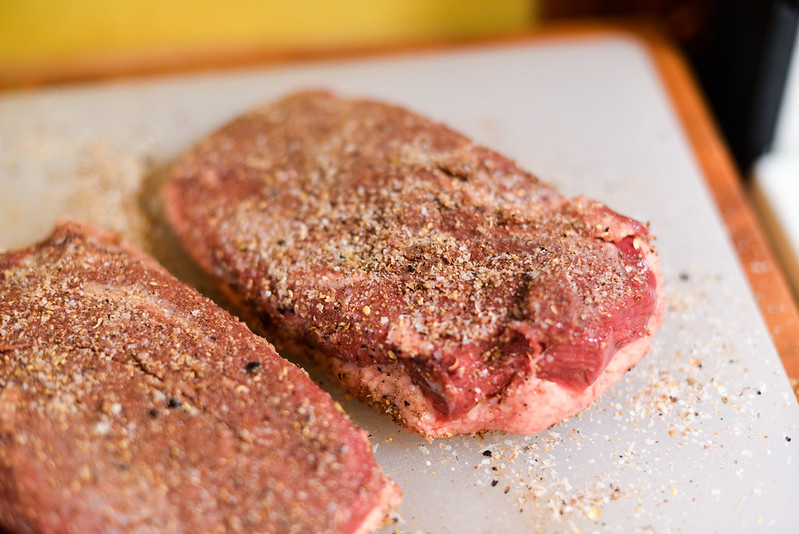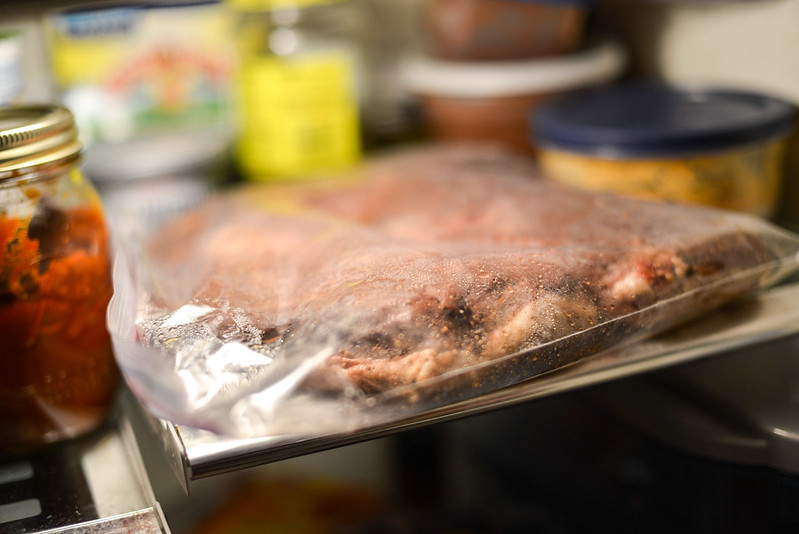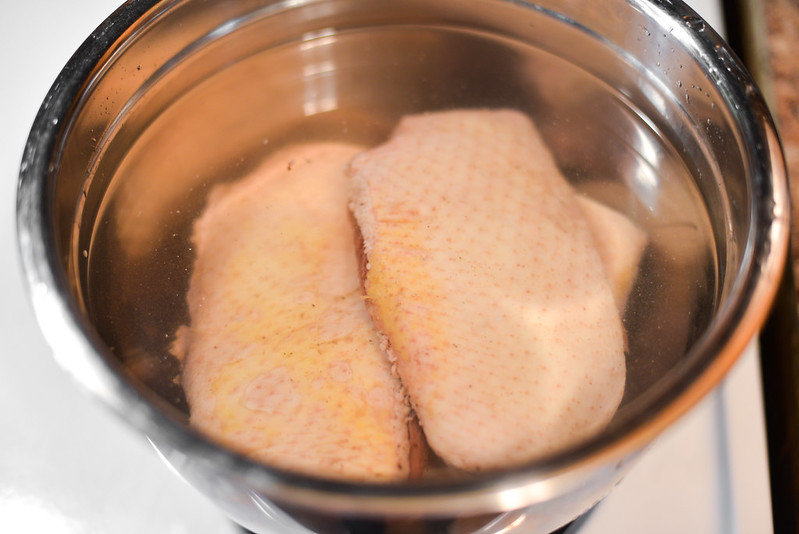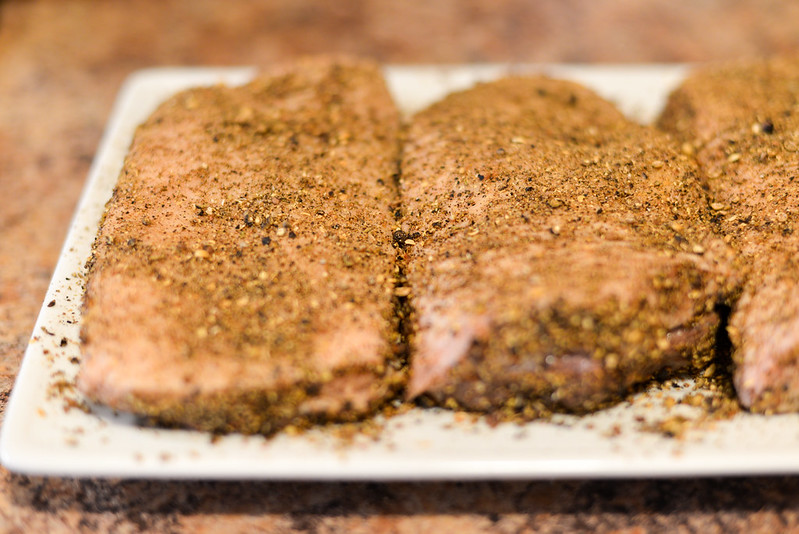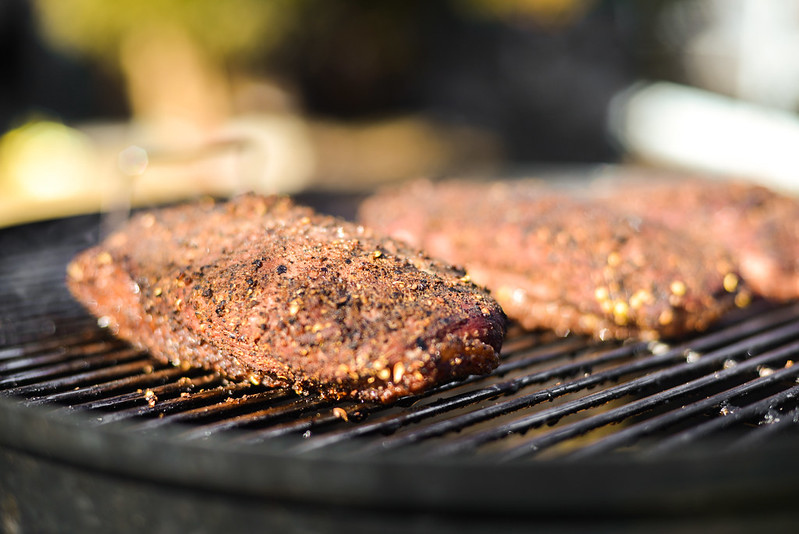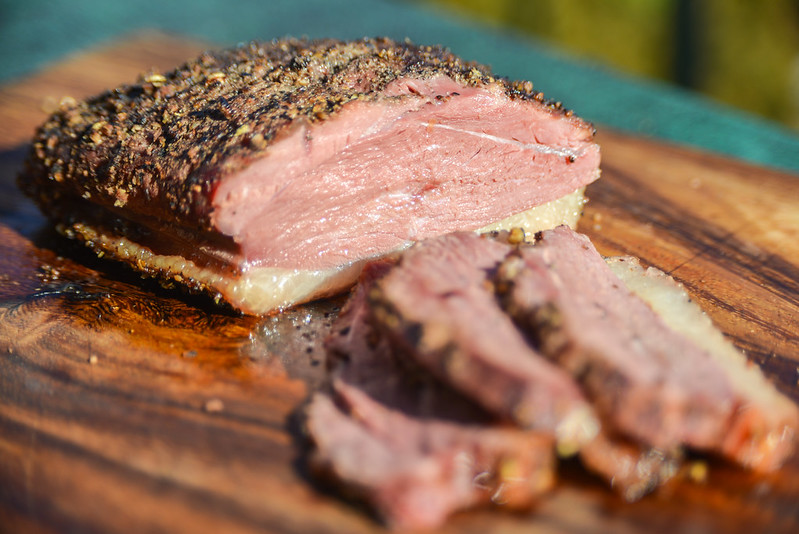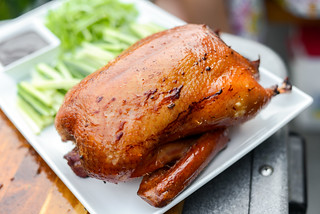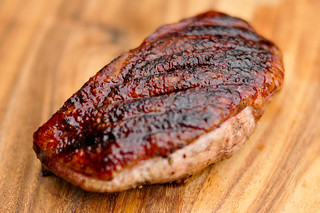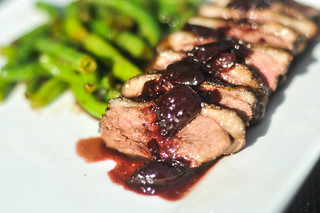Duck Pastrami
Ah, nothing like the laziness of winter to get some fine meat curing in. The immediacy that summer tends to require means I often forget, or never want to tackle, multi-day projects, but bring on the cold and short days and I'm all about filling up my fridge with meats sitting in cure, slowly transforming into delicious pastrami, Montreal smoked meat, or Canadian bacon. So another winter requires another curing project, and I took things to a smaller scale this time around by trying my hand at duck pastrami
I had good success with regular beef pastrami, so I saw little need to deviate much from that recipe and process when making the switch from bovine to poultry. I used a very similar dry cure that combined the usual suspects of salt, coriander, brown sugar, and garlic. I did add extra seasoning into this cure though, in the way of ginger, juniper berries, and ground cloves, thinking the more delicate flavor of the duck would better pick up the nuances of all the spices. I also changed out Morton Tender Quick in favor of pink curing salt, liking the idea of understanding how much nitrites are going into my cure and having better control over that.
Four large, skin-on duck breasts were coated in the dry cure, placed in a Ziploc bag, and set in the fridge. Over the next three days, some moisture was released from the breasts, pooling at the bottom of the bag. To keep the cure even throughout, I flipped the bag twice a day to redistribute that collecting liquid.
Then on the third day, God said, "Let there be pastrami." And there was, but first I had to remove some of the salt from the duck. This was done through a water bath—letting the breasts soak in cold water for two hours, changing the water out every thirty minutes. This helped dilute and remove some of that concentrated saltiness.
Next the rub was applied. Like with the brine, I pretty much stuck with a standard pastrami rub of black pepper, coriander, and garlic, adding only juniper berries for a little uniqueness. This rub was applied heavily on the duck, making sure each bite would have the sharp bite that makes a pastrami.
Finally, the duck was smoked over cherry wood at 225 degrees until they reached 165 degrees in the center of the breast. unlike brisket, where smoking can take six hours or more, the duck was done in a mere two hours. Less time waiting and more time eating was certainly a welcome change.
I dug into this pastrami almost straight out of the smoker—only stopping for a quick photo shoot. While it was at its hottest, the thick layer of duck fat was incredibly luscious, and I found myself pulling it off and enjoying the salty, rich fat on its own. The meat tasted how pastrami should, except being ducky rather than beefy, which did let a little more of the spices come through. I enjoyed this duck pastrami the most on its own—just slice and eat—but it did just as well piled onto rye with swiss and a slather of mustard.
You Might Also Like
Comments
-
Kevin How did you maintain that color by cooking it through? Additionally, did you try it cold?
-
Josh @Kevin The color is due to the curing process%u2014meat gets that reddish color after being cured. It was good cold as well, but I personally preferred this pastrami hot.
-
Kevin I thought about that after I posted it. Turned out great, nice recipe. thanks!
-
Mike I have access to lots! of wild duck and this turned out to be a great way to process it.
Great flavor and gets rave reviews from my friends.
Since the wild ducks are a little smaller I usually end up slicing and putting it on a cracker with a spot of mustard as an hors d'urve.
(sorry if I got that misspelled) -
Kevin S Polsky I am Trying this recipe with both Wild mallard breasts and also Wile Speckelbelly Geese. I will post back next week to let you know how these turn out.
-
Matthew Roberts I made this and it turned out great! I have loads of duck breasts left in my freezer that don't have skins on. Will this still turn out good if I make it without the skin on? Thanks!
-
Pat Barin Making it again, 4th time this year, also did some goose breast. Great recipe. The flavour is amazing.
-
Amber This is exact same article and pictures as from serious eats. It's okay that you used the same recipe but you could have taken your own pictures.
-
Josh @Amber I’m also the author of the Serious Eats article. I developed recipes for SE for years and my agreement with them allowed reposting on my personal site, so you’ll find a number of my recipes on both sites.
